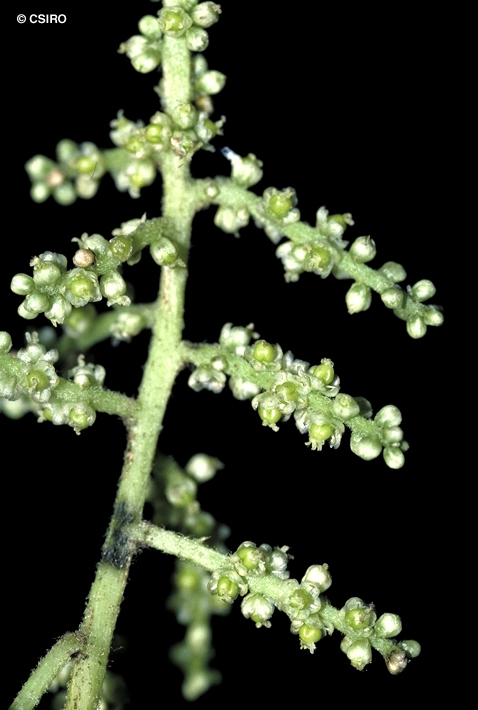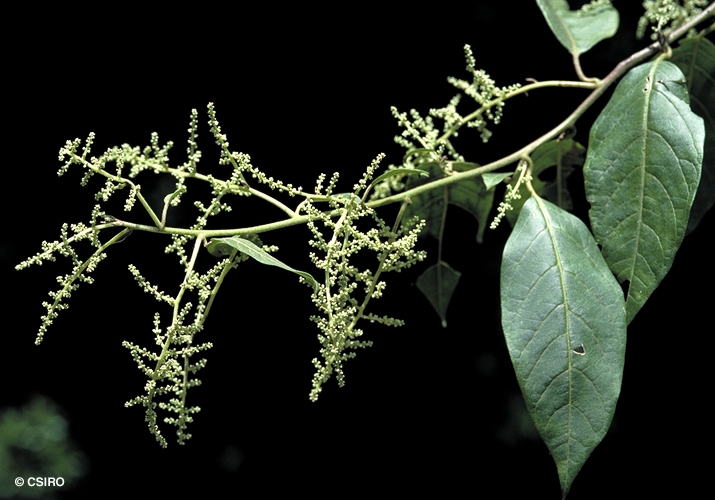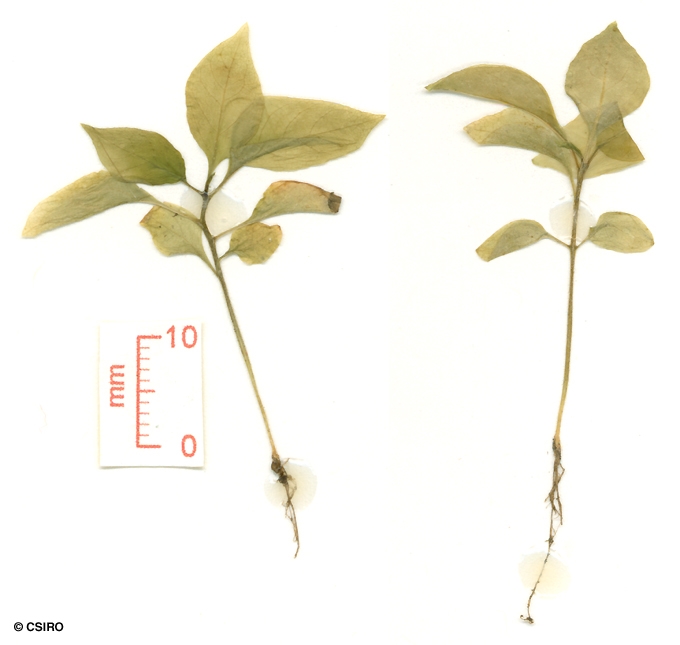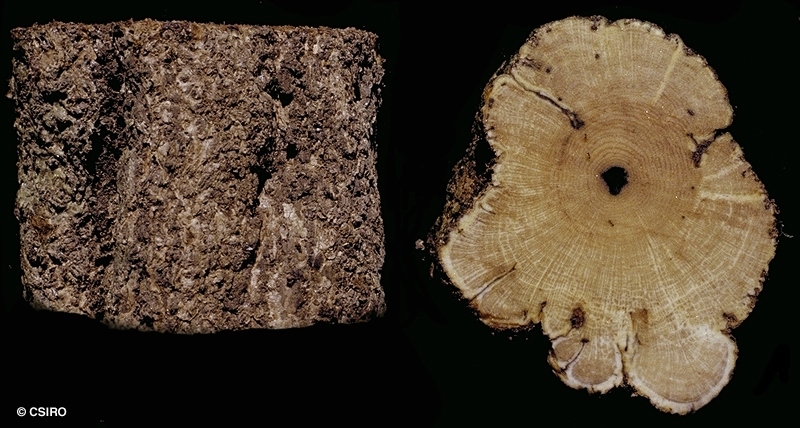Australian Tropical Rainforest Plants - Online edition
Deeringia arborescens (R.Br.) Druce







Druce, G.C. (1917) The Botanical Exchange Club and Society of the British Isles Report for 1916, Suppl. 2 : 619.
Climbing Deeringia; Deeringia, Climbing
Usually a large tree-top vine, stem diameters up to 13 cm recorded. The combination of vascular rays and growth rings result in stem cross sections which resemble miniature spider webs.
Leaf blades about 8-14 x 2.5-6 cm, petioles about 1.5-4 cm long. Upper surface of the leaf blades clothed in scattered +/- clumped hairs, underside clothed in crisped multicellular, sometimes branched, hairs. Leafy twigs clothed in tortuous hairs. Petioles sometimes twisted and perhaps acting as tendrils.
Male flowers: Flowers white, about 2.5 mm diam., emitting an obnoxious odour. Tepals +/- orbicular, about 1-1.2 mm diam. Staminal filaments short, about 0.3-1.2 mm long. Stigmatic arms papillose. Female flowers: Flowers about 2 mm diam. Tepals about 1 mm long. Staminodes five, attached to a narrow disk surrounding the base of the ovary. Ovary green, about 1 mm long. Stigma three-lobed or three-armed. Ovules six, each attached by a separate stalk.
Cotyledons ovate, about 7-9 x 4-6 mm. Stem clothed in short bristle-like hairs. First pair of leaves ovate. At the tenth leaf stage: leaf blade broadly lanceolate to elliptic, apex acuminate to caudate. Lateral veins 10-14 on each side of the midrib, forming loops inside the blade margin. Midrib and the lateral veins raised on the upper surface. Both the upper and lower surfaces of the leaf blade clothed in short multicelled crisped hairs. Seed germination time 11 to 19 days.





